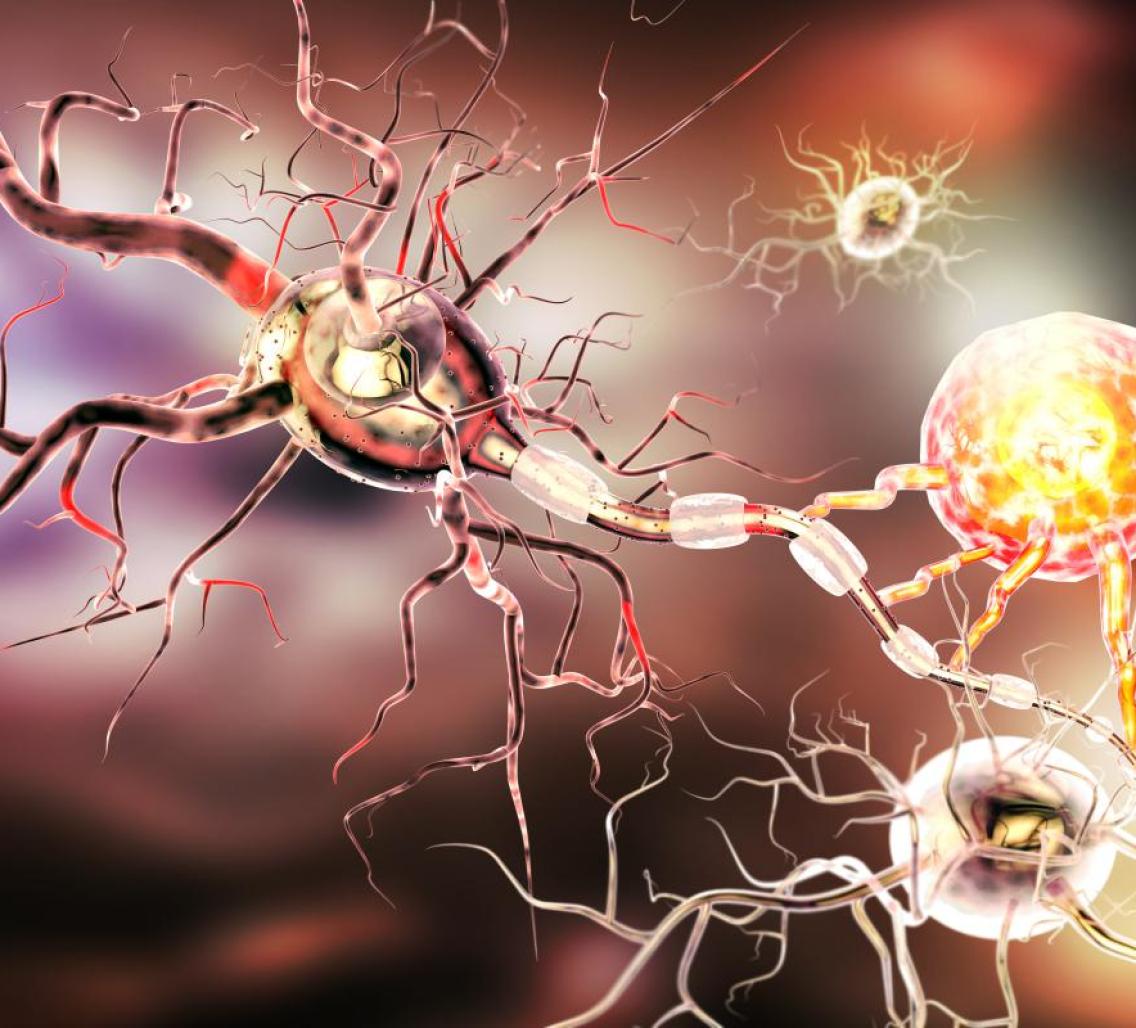Cargo trafficking in your brain: A Q&A with neurobiologist Meng-meng Fu

By Saumyaa Saumyaa
Meng-meng Fu is a postdoctoral researcher in the lab of Ben Barres at Stanford’s Neurobiology Department. She studies how macromolecules, such as proteins and RNA, move inside a cell from one location to another, specifically in a certain type of brain cells. Such transport within cells is essential for their function. For example, proteins mass produced at one location may be needed at a distant location within the cell. Saumyaa Saumyaa, a postdoctoral fellow, talked to Meng-Meng to learn more about her research journey so far.
Q: What is your research focus at Stanford?
A: I work on a type of brain cells called oligodendrocytes. Oligodendrocytes have a very unique structure that makes them critical for proper functioning of neurons. They have multiple extensions around them, which flatten out at the ends like a squeezed toothpaste tube, to form myelin. This myelin sheath consisting mostly of fat, wraps around the axons of neurons. An axon is the long threadlike extension of a neuron cell that conducts electrical impulses, thus allowing neurons to communicate with other neurons or cells in the body, such as muscle cells. A good analogy is that the myelin sheath around an axon functions like the rubber insulation around electrical wires.
Q. What was your Ph.D. research about?
A: I worked on motor proteins in neurons in the lab of Erika Holzbaur. Motor proteins help transport molecules within the cell. The axons of some human neurons can reach lengths of 1 meter. So it becomes a daunting task for a neuron to ship proteins, such as neurotransmitters, from the cell body to the end of the axon, where they are needed to communicate with other neurons. Neurons accomplish this task by using a trafficking system very similar to road transport in our cities. In cells, the roads are the microtubule cytoskeleton, the trucks are motor proteins, and the cargo are vesicles filled with proteins. The distance some of these motor proteins walk in one trip is similar to a human making two rounds around the earth’s equator. I specifically studied the proteins that hook the cargo vesicles to the motor proteins, called adaptor proteins.
Q: How did you decide to choose your current postdoc lab? After studying neurons during your PhD what made you switch gears to study oligodendrocytecells during your postdoctoral research?
A: The most important thing that I looked for in a postdoc lab was a supportive mentor. My advisor, Ben Barres, has an excellent track record of postdocs who now head their own academic labs and is one the most respected scientists in the field of non-neuronal brain cells. While there are a lot of excellent labs studying how transport happens in neurons, less is known about how transport happens in the cells that support neurons, such as oligodendrocytes. Unlike the axons of neurons, oligodendrocytes have extensions that are shorter and more branched, and wrap many times around the axon to form the myelin sheath. Since they are structurally different from axons, it would make sense if they have different types of cargo and mechanisms for transporting these cargo. I wanted to bridge the gap and understand transport in oligodendrocytes and Ben’s lab has provided an amazing environment where I have both rigorous scientific guidance and the independence to explore new topics.
Q: Where is your research headed?
A: My research at present has two directions. One is understanding how the microtubule cytoskeleton (roads on which motor proteins travel) is organized in oligodendrocytes. We have identified a new protein that binds to microtubules and is important in its assembly. The second aspect of my research is understanding how different types of cargo are transported in oligodendrocytes. Most protein cargo is enclosed in vesicles surrounded by a membrane and this membrane associates with adaptor proteins that hook motor proteins onto the vesicle. Other types of cargo, such as mRNA—the genetic precursor to proteins—are shipped in the absence of any membrane. We are studying the transport of the mRNA of a protein called myelin basic protein, which is very important for the formation of myelin.
Q: Why is it important to study oligodendrocytes and myelination?
A: Each extension of the oligodendrocyte may form a myelin sheath at the terminal end. This myelin sheath wraps around an axon like multiple layers of paper towel around its roll. It can affect the speed and the efficiency with which electrical signals travel down an axon. Therefore, it is very important in both development and disease. A lot of the changes we see in a developing mammal, for example improvement in motor skills, correlate with myelination, which starts to ramp up after birth.
Death of oligodendrocytes or damage to myelin causes disease. In multiple sclerosis for example, the body’s defense force—the immune cells—attack myelin. MRI imaging in these patients shows pockets in the brain where there are no myelin sheaths. Though precursor cells that have the ability to become oligodendrocytes, can migrate into these pockets and form new myelin, this process is usually not very efficient, so patients’ symptoms keep progressing.
Q: What are the therapeutic implications of your research?
A: Drugs for multiple sclerosis all target the immune system. Currently, no drugs on the market target oligodendrocytes. Hopefully, my work may lead to new drug targets for stimulating oligodendrocyte regrowth and myelin regeneration.